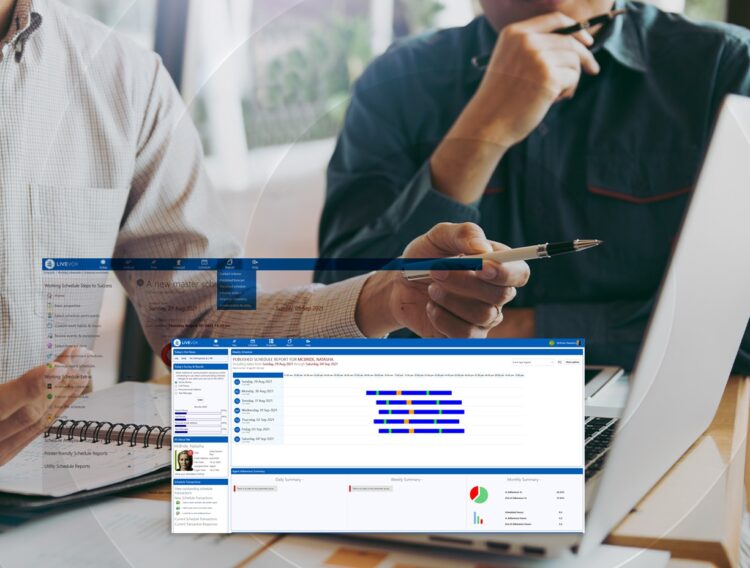The global construction market is projected to grow to an impressive $14.4 billion by 2030. While the construction industry is experiencing a boom, it has its fair share of challenges. One of the common problems faced in construction is poor employee performance and low productivity.
The lackluster performance of employees can result in delays, errors, and losses. All of that can be avoided by simply leveraging construction workforce management software. Such software can automate simple management tasks, streamline workflows, and identify bottlenecks. Bridgit is one of the best workforce management software for the construction workforce.
But how can workforce management software help improve employee performance? There are many ways automating construction workflows can help get the best out of employees on every level.
Page Contents
Problems with construction workforce management

Source; penguindata.com
Regardless of size and scope, construction projects are often riddled with issues that can easily be prevented or resolved. Whether the problems are man-made or not, the inevitable results are delays in the completion of the project and contractors running way over their initial budget.
A study conducted in Indonesia explored the causes of delays in construction projects in the province of Aceh. Of the 60 risk factors identified, eight were identified as management problems, and seven were identified as project manager-related issues.
Poor management can cause low productivity and subpar performance by employees. That, in turn, can cause unnecessary delays in day-to-day workflows. As construction projects typically involve a large workforce, outdated management techniques do more harm than good.
One way or another, poor workforce management can negatively impact employee performance, regardless of the employee’s role. According to Gallup, disengaged employees have 15% lower productivity, and the cost of that can be 34% of their annual salary.
The importance of using construction workforce management software

Sourxe: livevox.com
Managing a large workforce is no easy job, with many different chains of command, complex workflows, and time-sensitive tasks. A software solution can simplify how tasks are delegated, how they are reported, and how they can be performed better.
It’s essential for construction companies and contractors to invest in technology that streamlines management, giving a bird’s eye view of everything that is going on in the project.
A wide array of problems construction companies face, such as lack of communication, poor planning, and financial losses, can be mitigated with the help of automation.
How construction workforce management software can improve employee performance
While there are many benefits of using software to manage the construction workforce, a notable impact is higher worker productivity. Here is how it works to improve employee performance:
Avoid delays and obstacles
Unnecessary delays or hurdles in the project can also take a toll on employee morale. If the workers put in the hours and do their job, but the project still faces delays, they may feel like their work is not good enough. Instead of providing the incentive to work better, constant delays can negatively impact their productivity.
With software for construction workforce management, project managers can reduce their time in meetings.
Similarly, they can avoid scheduling mishaps, ensuring that workers never sit idle and tasks are finished promptly. But more importantly, workforce management software can help forecast and plan more accurately, considering any risks. Such an approach also helps identify issues early on, helping avoid long delays.
Efficient delegation
As construction teams are typically big, task delegation can get complicated. Ideally, you want to assign a job to someone good at it. That way, the productivity would be high, and the output would be the best. However, managers may find it hard to do this manually.
A workforce management solution that maintains a detailed employee performance and skills history may help better task delegation. It also makes task scheduling and assignment quick and easy, as managers can see who is available and meets the task’s requirements.
Delegation is a big part of effective management. Employees getting jobs they have the skills for or the tasks they want are more likely to perform better.
Employee feedback

Source: servicethatsells.com
Listening to the employees is critical for good management. In a field like construction, it may be even more important because managers are not always present on site, but workers are. With the help of data and direct feedback from employees, managers can use the software to implement necessary changes and adapt.
Workers can feel frustrated if they feel like they are not being heard. With the help of digital workforce management solutions, gathering and analyzing employee feedback can be automated.
More visibility
A workforce management tool can incentivize workers to perform better simply by making their efforts measurable. Such a tool can show managers which employees completed their tasks early or by the deadline. Managers have a better outlook on who is meeting or exceeding their performance goals and who needs a little more push.
In other words, there’s more visibility and accountability of employee performance, which ensures that their efforts to do well don’t go unnoticed.
Work satisfaction

Sourced: cleancomedians.com
There are multiple ways workforce management software can help increase employees’ satisfaction with their work and work environment. According to research, 92% of employees say that tools that help them do their job increase their work satisfaction.
Good workforce management also leads to cost savings, which means workers are paid on time. Employee efforts are recognized and rewarded. Moreover, projects finish on time, increasing client satisfaction, which, in turn, positively impacts employee satisfaction.
Management tools can reduce worker problems by identifying and resolving scheduling conflicts or bottlenecks in the workflow.
Conclusion
Investment in construction sector technology has been slow, but it’s picking up pace. More and more contractors realize the benefit of tech tools, including high worker productivity. While tech solutions can be implemented in many parts of construction projects, workforce management remains essential.
Construction workforce management software helps reduce labor costs, avoid delays, and increase employee engagement and productivity. With the help of efficient delegation, performance recognition, and quick problem-solving, managers can leverage the power of software to increase productivity throughout the workforce.




